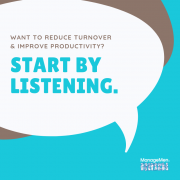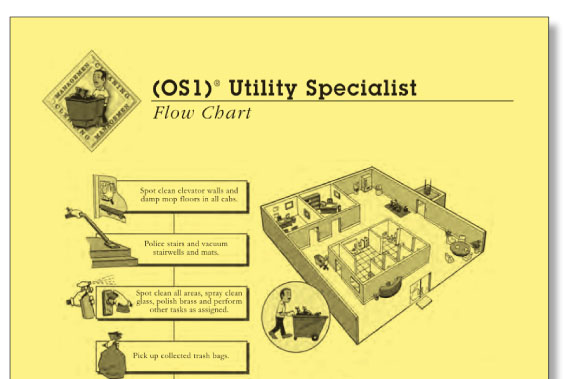The Single Most Important Thing You Can Do to Attract and Retain Custodial Workers
What do employees what in a job, anyway? Custodial managers often ask themselves this question when assembling a new team or filling a position opening. Finding good staff is difficult, because even in tough labor markets, turnover in the commercial cleaning industry is notoriously high—as much as 200 percent in some operations.
In Facility Cleaning Decision’s 2018 Reader Survey, staffing challenges were one of respondents’ top areas of concerns. While respondents cited an average turnover rate of 15 percent, they identified numerous reasons for people leaving the department, including opportunities for better pay, limited advancement opportunities and the physical nature of the work.
Stop for a minute and imagine that you just found out that several people on your team were currently looking for a new job. Would you do anything to help dissuade them from leaving? If so, what? As custodial managers, we can’t often set perks such as benefit programs or 401k plans, but there are a few carrots we can extend team members to incentivize and retain them.
To be clear, we’re not talking about Silicon Valley office style carrots either. Giving employees a place to take a nap or play video games isn’t a likely possibility in most custodial environments. But take Bain & Company, Gassdoor’s top place to work in 2019, as voted on by their employees. The one thing their employees say makes working at Bain so great?
Its employee-focused culture.
“The people are what make [Bain] special,” said one Bain employee. “Throughout my career, I can point to people who invested in me, helping me to grow and develop.”

An employee-focused culture means developing an environment that helps employees evolve both personally and professionally. It means thinking about how the work impacts them. It’s about not viewing them as cogs in the wheel, but as the wheel itself—necessary to move forward.
How can you create an employee-focused culture? It’s not as hard as you might think.
- Offer frequent training and certification. LinkedIn’s 2018 Workforce Learning Report revealed that a shocking 93 percent of employees would stay at a company longer if it invested in their careers. Training is one of the top ways to retain custodial workers, but it can also be one of the most difficult due to the diversity of our industry. Languages, disabilities and ages can all present barriers when training employees. Training programs that accommodate a variety of learning styles can help workers understand not just HOW to do the job, but why their jobs are important. Help them understand how to protect themselves during work and demonstrate a culture of safety. Consider offering a stipend for other training and/or certification offered beyond your organization, and think about micro learning opportunities, which do not require the time or commitment of traditional certifications.
- Provide opportunities for advancement. Custodial work is often looked at as a transition position. “I’ll work as a custodian until I can get another job,” people say, or maybe they pick up custodial work as a second job to earn extra income in evening hours. What too many employees don’t realize is that they can have a great career—that pays well—in the cleaning industry. Through mentorship and managerial shadowing programs, you can give frontline employees a lens into some of the opportunities available in the field. Provide a clear outline of advancement opportunities so they understand what they need to do to get to where they want to go.
- Give Recognition. Frequently. From housekeepers week to environmental services week, National Custodian Day (Oct. 2, 2019) to Thank Your Cleaner Day (Oct. 16, 2019), there are plenty of recognized events to recognize cleaning workers. But you don’t have to wait for an official day to give staff an applause for a job well done—something simple like presenting a star award for outstanding performance or highlighting a “worker of the month” can help workers feel seen and appreciated.
- Balance workloads. It’s easy to give the faster, younger people on your team additional work that comes from a call-off or event, but that can create resentment over time. Employ a system to fairly divide work so that no one person or team bear the brunt of additional responsibilities.
- Show you care. Sometimes, it’s the small things that go the furthest with your team. Remembering an anniversary, details of an upcoming vacation or checking in with them to see how their child is doing in school shows your team that you’re listening, and that you care. Encourage your team to share ideas and create opportunities for connection at the beginning and end of each shift so you have time to talk with one another.
Automotive mogul Lee Iacocca once said, “Start with good people, lay out the rules, communicate with your employees, motivate them and reward them. If you do all those things effectively, you can’t miss.”







